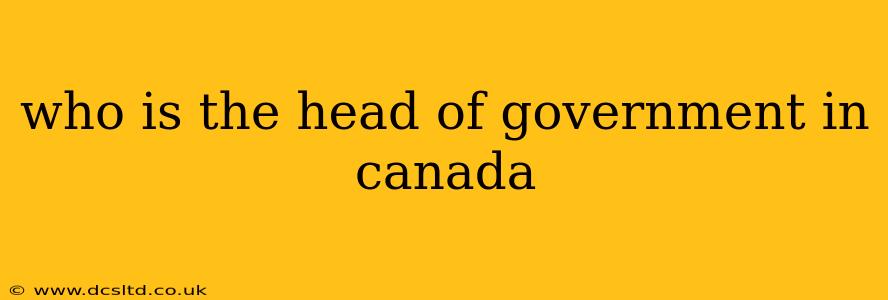The head of government in Canada is the Prime Minister. Unlike many other countries with a parliamentary system, Canada doesn't have a president as the head of state. Instead, the monarch of Canada, currently King Charles III, holds that largely ceremonial role. The Prime Minister, however, is the true head of government, leading the country's executive branch and directing the day-to-day operations of the federal government.
How is the Canadian Prime Minister Chosen?
The Prime Minister is selected through a process rooted in Canada's parliamentary democracy. It's not a direct election like the presidency in the United States. Instead:
- Federal Elections: Canadians elect Members of Parliament (MPs) to represent their ridings (electoral districts) in the House of Commons. Each riding elects one MP.
- Party with Majority: The political party that wins the majority of seats (over half) in the House of Commons typically forms the government.
- Leader Becomes Prime Minister: The leader of that party automatically becomes the Prime Minister. They are then sworn in by the Governor General (the representative of the monarch in Canada).
Who is the Current Prime Minister of Canada?
As of October 26, 2023, the current Prime Minister of Canada is Justin Trudeau, leader of the Liberal Party.
What are the Prime Minister's Responsibilities?
The Prime Minister's responsibilities are vast and encompass numerous aspects of Canadian governance. Some key roles include:
- Leading Cabinet: The Prime Minister appoints ministers to head various government departments and agencies, forming the Cabinet. They preside over Cabinet meetings and guide policy decisions.
- Setting the Government Agenda: The Prime Minister sets the legislative agenda for Parliament, proposing bills and influencing the passage of laws.
- Appointing Judges: The Prime Minister plays a significant role in appointing judges to various courts, including the Supreme Court of Canada.
- Representing Canada Internationally: The Prime Minister represents Canada on the world stage, attending international summits and conducting diplomatic relations with other countries.
- Managing the Executive Branch: The Prime Minister oversees the bureaucracy and ensures the effective implementation of government policies.
What is the difference between the Head of State and the Head of Government?
This is a key distinction in Canada's parliamentary system.
-
Head of State (King Charles III): The Head of State is primarily a ceremonial figure. They are the symbolic head of the country, representing Canada both domestically and internationally. They do not directly involve themselves in the day-to-day running of the government.
-
Head of Government (Justin Trudeau): The Head of Government is the individual who actually runs the government and makes major decisions. They are responsible for the daily operations and policy decisions.
What is the Governor General's role in relation to the Prime Minister?
The Governor General, appointed by the monarch on the advice of the Prime Minister, plays a vital constitutional role, acting as a representative of the Crown. While largely ceremonial, the Governor General has a few key powers related to the Prime Minister, such as:
- Swearing in the Prime Minister: The Governor General formally appoints the Prime Minister after a federal election.
- Dissolving Parliament: While typically acting on the advice of the Prime Minister, the Governor General can dissolve Parliament and call for a federal election.
- Assenting to Bills: The Governor General officially approves bills passed by Parliament, making them law.
Understanding the roles of the Prime Minister and other key figures within the Canadian political landscape is crucial for any citizen interested in active participation in their democracy. The system, while complex, is built on principles of parliamentary democracy and a balance of power between the head of state and head of government.
